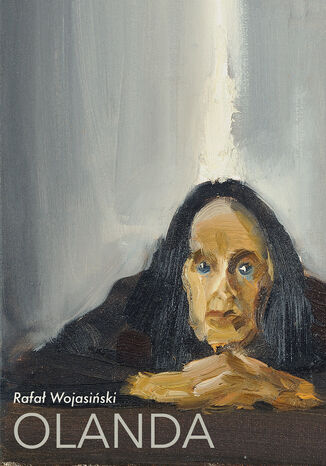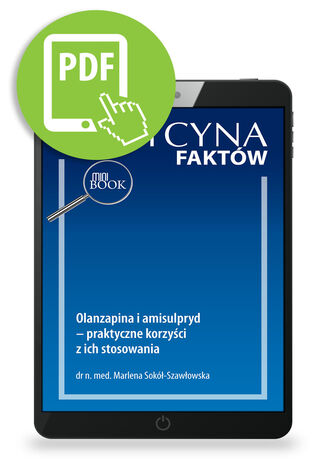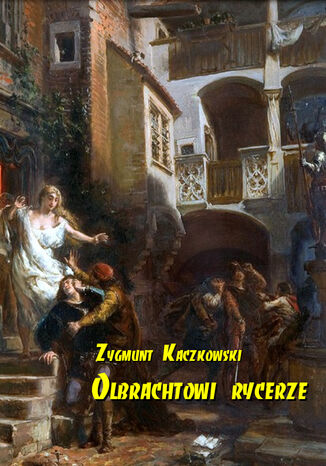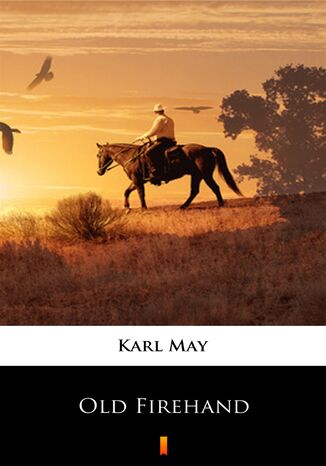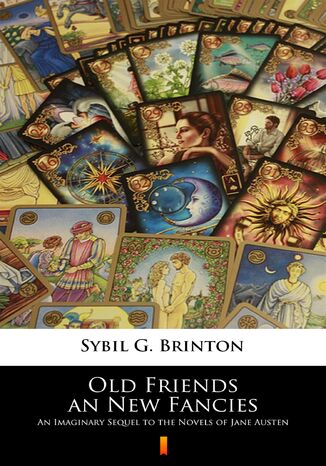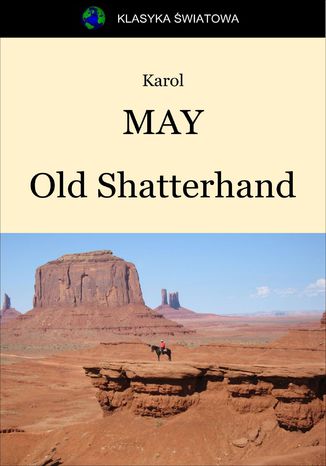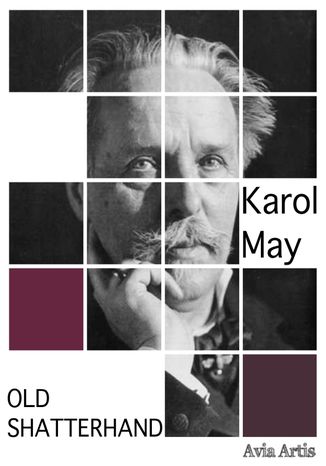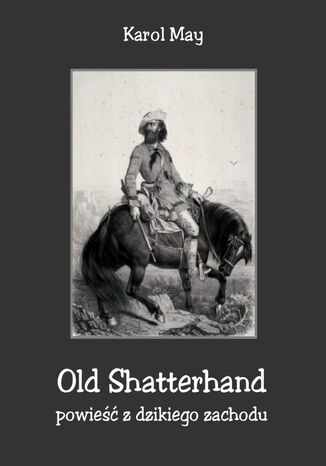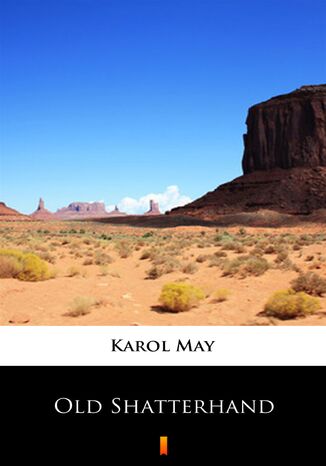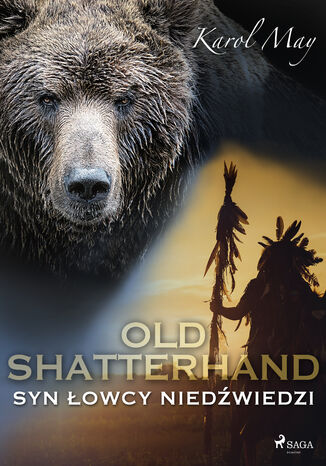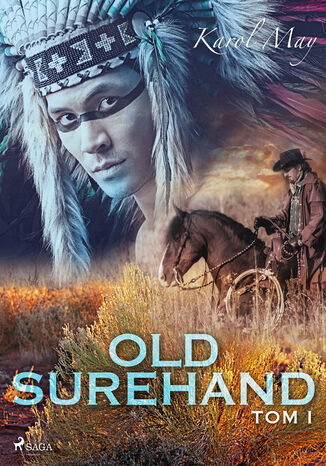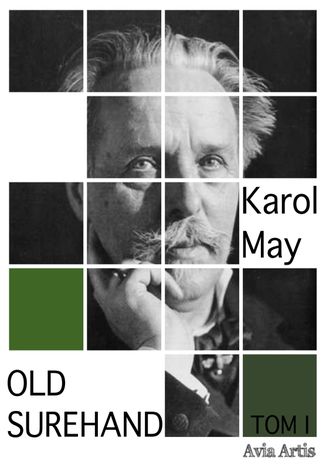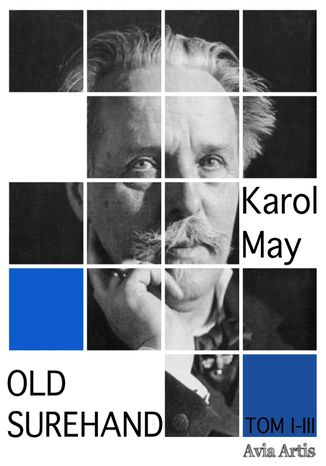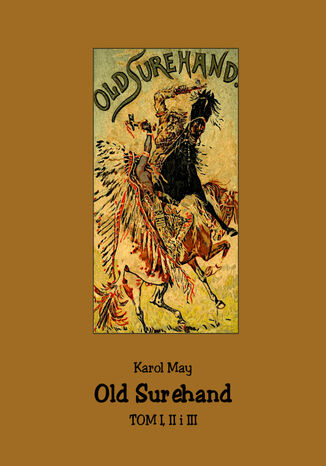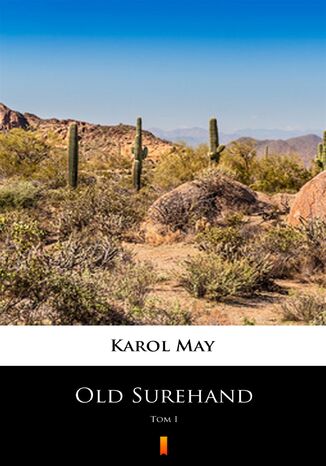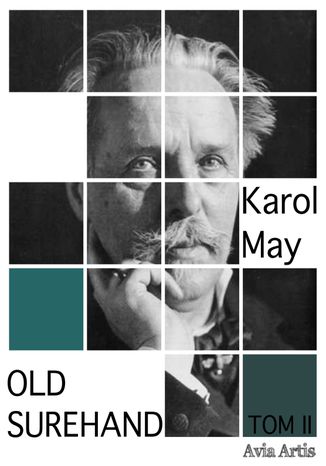Категорії
Електронні книги
-
Бізнес та економіка
- Біткойн
- Ділова жінка
- Коучинг
- Контроль
- Електронний бізнес
- Економіка
- Фінанси
- Фондова біржа та інвестиції
- Особисті компетенції
- Комп'ютер в офісі
- Комунікація та переговори
- Малий бізнес
- Маркетинг
- Мотивація
- Мультимедійне навчання
- Нерухомість
- Переконання та НЛП
- Податки
- Соціальна політика
- Порадники
- Презентації
- Лідерство
- Зв'язки з громадськістю
- Звіти, аналізи
- Секрет
- Соціальні засоби комунікації
- Продаж
- Стартап
- Ваша кар'єра
- Управління
- Управління проектами
- Людські ресурси (HR)
-
Для дітей
-
Для молоді
-
Освіта
-
Енциклопедії, словники
-
Електронна преса
- Architektura i wnętrza
- Безпека життєдіяльності
- Biznes i Ekonomia
- Будинок та сад
- Електронний бізнес
- Ekonomia i finanse
- Езотерика
- Фінанси
- Особисті фінанси
- Бізнес
- Фотографія
- Інформатика
- Відділ кадрів та оплата праці
- Для жінок
- Комп'ютери, Excel
- Бухгалтерія
- Культура та література
- Наукові та академічні
- Охорона навколишнього середовища
- Впливові
- Освіта
- Податки
- Подорожі
- Психологія
- Релігія
- Сільське господарство
- Ринок книг і преси
- Транспорт та спедиція
- Здоров'я та краса
-
Історія
-
Інформатика
- Офісні застосунки
- Бази даних
- Біоінформатика
- Бізнес ІТ
- CAD/CAM
- Digital Lifestyle
- DTP
- Електроніка
- Цифрова фотографія
- Комп'ютерна графіка
- Ігри
- Хакування
- Hardware
- IT w ekonomii
- Наукові пакети
- Шкільні підручники
- Основи комп'ютера
- Програмування
- Мобільне програмування
- Інтернет-сервери
- Комп'ютерні мережі
- Стартап
- Операційні системи
- Штучний інтелект
- Технологія для дітей
- Вебмайстерність
-
Інше
-
Іноземні мови
-
Культура та мистецтво
-
Шкільні читанки
-
Література
- Антології
- Балада
- Біографії та автобіографії
- Для дорослих
- Драми
- Журнали, щоденники, листи
- Епос, епопея
- Нарис
- Наукова фантастика та фантастика
- Фельєтони
- Художня література
- Гумор, сатира
- Інше
- Класичний
- Кримінальний роман
- Нехудожня література
- Художня література
- Mity i legendy
- Лауреати Нобелівської премії
- Новели
- Побутовий роман
- Okultyzm i magia
- Оповідання
- Спогади
- Подорожі
- Оповідна поезія
- Поезія
- Політика
- Науково-популярна
- Роман
- Історичний роман
- Проза
- Пригодницька
- Журналістика
- Роман-репортаж
- Romans i literatura obyczajowa
- Сенсація
- Трилер, жах
- Інтерв'ю та спогади
-
Природничі науки
-
Соціальні науки
-
Шкільні підручники
-
Науково-популярна та академічна
- Археологія
- Bibliotekoznawstwo
- Кінознавство / Теорія кіно
- Філологія
- Польська філологія
- Філософія
- Finanse i bankowość
- Географія
- Економіка
- Торгівля. Світова економіка
- Історія та археологія
- Історія мистецтва і архітектури
- Культурологія
- Мовознавство
- літературні студії
- Логістика
- Математика
- Ліки
- Гуманітарні науки
- Педагогіка
- Навчальні засоби
- Науково-популярна
- Інше
- Психологія
- Соціологія
- Театральні студії
- Богослов’я
- Економічні теорії та науки
- Transport i spedycja
- Фізичне виховання
- Zarządzanie i marketing
-
Порадники
-
Ігрові посібники
-
Професійні та спеціальні порадники
-
Юридична
- Безпека життєдіяльності
- Історія
- Дорожній кодекс. Водійські права
- Юридичні науки
- Охорона здоров'я
- Загальне, компендіум
- Академічні підручники
- Інше
- Закон про будівництво і житло
- Цивільне право
- Фінансове право
- Господарське право
- Господарське та комерційне право
- Кримінальний закон
- Кримінальне право. Кримінальні злочини. Кримінологія
- Міжнародне право
- Міжнародне та іноземне право
- Закон про охорону здоров'я
- Закон про освіту
- Податкове право
- Трудове право та законодавство про соціальне забезпечення
- Громадське, конституційне та адміністративне право
- Кодекс про шлюб і сім'ю
- Аграрне право
- Соціальне право, трудове право
- Законодавство Євросоюзу
- Промисловість
- Сільське господарство та захист навколишнього середовища
- Словники та енциклопедії
- Державні закупівлі
- Управління
-
Путівники та подорожі
- Африка
- Альбоми
- Південна Америка
- Центральна та Північна Америка
- Австралія, Нова Зеландія, Океанія
- Австрія
- Азії
- Балкани
- Близький Схід
- Болгарія
- Китай
- Хорватія
- Чеська Республіка
- Данія
- Єгипет
- Естонія
- Європа
- Франція
- Гори
- Греція
- Іспанія
- Нідерланди
- Ісландія
- Литва
- Латвія
- Mapy, Plany miast, Atlasy
- Мініпутівники
- Німеччина
- Норвегія
- Активні подорожі
- Польща
- Португалія
- Інше
- Przewodniki po hotelach i restauracjach
- Росія
- Румунія
- Словаччина
- Словенія
- Швейцарія
- Швеція
- Світ
- Туреччина
- Україна
- Угорщина
- Велика Британія
- Італія
-
Психологія
- Філософія життя
- Kompetencje psychospołeczne
- Міжособистісне спілкування
- Mindfulness
- Загальне
- Переконання та НЛП
- Академічна психологія
- Психологія душі та розуму
- Психологія праці
- Relacje i związki
- Батьківство та дитяча психологія
- Вирішення проблем
- Інтелектуальний розвиток
- Секрет
- Сексуальність
- Спокушання
- Зовнішній вигляд та імідж
- Філософія життя
-
Релігія
-
Спорт, фітнес, дієти
-
Техніка і механіка
Аудіокниги
-
Бізнес та економіка
- Біткойн
- Ділова жінка
- Коучинг
- Контроль
- Електронний бізнес
- Економіка
- Фінанси
- Фондова біржа та інвестиції
- Особисті компетенції
- Комунікація та переговори
- Малий бізнес
- Маркетинг
- Мотивація
- Нерухомість
- Переконання та НЛП
- Податки
- Соціальна політика
- Порадники
- Презентації
- Лідерство
- Зв'язки з громадськістю
- Секрет
- Соціальні засоби комунікації
- Продаж
- Стартап
- Ваша кар'єра
- Управління
- Управління проектами
- Людські ресурси (HR)
-
Для дітей
-
Для молоді
-
Освіта
-
Енциклопедії, словники
-
Електронна преса
-
Історія
-
Інформатика
-
Інше
-
Іноземні мови
-
Культура та мистецтво
-
Шкільні читанки
-
Література
- Антології
- Балада
- Біографії та автобіографії
- Для дорослих
- Драми
- Журнали, щоденники, листи
- Епос, епопея
- Нарис
- Наукова фантастика та фантастика
- Фельєтони
- Художня література
- Гумор, сатира
- Інше
- Класичний
- Кримінальний роман
- Нехудожня література
- Художня література
- Mity i legendy
- Лауреати Нобелівської премії
- Новели
- Побутовий роман
- Okultyzm i magia
- Оповідання
- Спогади
- Подорожі
- Поезія
- Політика
- Науково-популярна
- Роман
- Історичний роман
- Проза
- Пригодницька
- Журналістика
- Роман-репортаж
- Romans i literatura obyczajowa
- Сенсація
- Трилер, жах
- Інтерв'ю та спогади
-
Природничі науки
-
Соціальні науки
-
Науково-популярна та академічна
-
Порадники
-
Професійні та спеціальні порадники
-
Юридична
-
Путівники та подорожі
-
Психологія
- Філософія життя
- Міжособистісне спілкування
- Mindfulness
- Загальне
- Переконання та НЛП
- Академічна психологія
- Психологія душі та розуму
- Психологія праці
- Relacje i związki
- Батьківство та дитяча психологія
- Вирішення проблем
- Інтелектуальний розвиток
- Секрет
- Сексуальність
- Спокушання
- Зовнішній вигляд та імідж
- Філософія життя
-
Релігія
-
Спорт, фітнес, дієти
-
Техніка і механіка
Відеокурси
-
Бази даних
-
Big Data
-
Biznes, ekonomia i marketing
-
Кібербезпека
-
Data Science
-
DevOps
-
Для дітей
-
Електроніка
-
Графіка / Відео / CAX
-
Ігри
-
Microsoft Office
-
Інструменти розробки
-
Програмування
-
Особистісний розвиток
-
Комп'ютерні мережі
-
Операційні системи
-
Тестування програмного забезпечення
-
Мобільні пристрої
-
UX/UI
-
Веброзробка, Web development
-
Управління
Подкасти
Książka ta została, w 2019 roku, laureatem Nagrody Literackiej im. Marka Nowakowskiego. Jej tłumaczenia ukazały się w Wielkiej Brytanii i Bułgarii. Realizm metafizyczny, poznawanie codzienności, filozofia zwyczajności. Trochę tu życia, trochę śmierci. Trochę wspomnień i trochę zapomnienia. Trochę radości i trochę cierpienia. Sporo tu strachu, stąd tak wiele słów, słowotok, który ukrywa, zakrywa, tłumi myśli. Bo można tu wyłapać wielkie tragedie wspomniane jakby od niechcenia, mimochodem. Ot, przytrafiły się. Czy to ma jeszcze jakieś znaczenie? Ale jest coś, co to wszystko napędza, cały ten mechanizm rzeczywistości, coś co daje nadzieję - miłość. Na przykład do tytułowej Olandy, właścicielki niewielkiego sklepu na prowincji, pod tą samą nazwą. Miłość do Oli po prostu. Pewnie lekko już podstarzałej, gaśniejącej z każdym dniem, ale dla niego - jedynej, idealnej, takiej, jaka powinna być. Z każdym dniem piękniejsza i pełniejsza. Olanda jest jak początek i koniec, przyciąga swoją zwyczajnością. W jej zasięgu wszystko jawi się jako poetyka codzienności - pogaduszki to tu, to tam, zakąszanie i podkąszanie, przygody ciała, rozważania o starości, o młodości, o psie i o kiełbasie. [wielkibuk.com] Nie da się ukryć, ponure to jest, bez dwóch zdań. Ale kto powiedział, że literatura ma być tylko rozrywką miłą i przyjemną? Dzisiaj rzecz jasna jest tendencja do łatwości i lekkości, bo to się po prostu lepiej sprzedaje, ale na Boga nie może być tak, żeby tylko to było na rynku! [Tadeusz Nyczek] Osoba autora tych opowieści jest dowodem na to, że ostatecznie nie istnieje coś tak banalnego jak sens, ale jest również dowodem na zachwyt, piękno, radość i urodę. To prawie cytat, bo znalezienie właściwych słów pochwały dla tej równocześnie poetyckiej i momentami bardzo zabawnej prozy nie jest proste. Gorąco polecam. [Maciej Wojtyszko] Poruszająca, urzekająca proza egzystencjalnego, (anty)nihilistycznego optymizmu, której budulec stanowi porażenie i zachwycenie światem, w jego, na pozór jedynie, prozaicznych przejawach. Na myśl przychodzą najszlachetniejsi pobratymcy Wojasińskiego - Camus, Stachura, Stasiuk. Niewątpliwie jego talent tkwiący zapewne w bezpretensjonalnej prostocie języka i opowieści stawia go blisko nich. Wojasiński nie przytłacza, pisze krótko, treściwie, a dogłębnie dotkliwie. To świadectwo wielkiego kunsztu. Do "Olandy" chce się wracać i ją kontemplować. Niewątpliwie jest tego warta. [dejw, lubimyczytac.pl] Nota: przytoczone powyżej opinie są cytowane we fragmentach i zostały poddane redakcji. Na okładce wykorzystano fragment obrazu "Matka" który namalował profesor Stanisław Baj (rok 1999, olej na płótnie, 33x24 cm). Autor tej książki i jej wydawca składają mu za jego udostępnienie uprzejme podziękowania.
Olanzapina i amisulpryd - praktyczne korzyści z ich stosowania
W artykule przedstawiono olanzapinę i amisulpryd jako dwie substancje od wielu lat stosowane z powodzeniem w praktyce psychiatrycznej. Opisano mechanizm działania olanzapiny w OUN, a także przedstawiono analizę szerokich zastosowań klinicznych tego leku w dużym zakresie dawek terapeutycznych. Po omówieniu wskazań i przeciwwskazań oraz możliwych działań niepożądanych skupiono się na postaciach doustnych i domięśniowych olanzapiny, a następnie szerzej omówiono postać ulegającą szybkiemu rozpadowi w jamie ustnej. W praktycznych wnioskach przedstawiono profil pacjentów, u których warto rozważyć stosowanie olanzapiny w toku leczenia różnych zaburzeń psychicznych. Drugą część opracowania poświęcono amisulprydowi. Opis mechanizmu działania, wskazań i przeciwwskazań rozszerzono o omówienie postępowania w przypadku hiperprolaktynemii polekowej. Ponadto wymieniono potencjalne sytuacje kliniczne, w których pacjenci mogą odnieść korzyści ze stosowania terapii amisulprydem. Efekty kliniczne terapii złożonej z olanzapiny i amisulprydu stosowanych jednocześnie są obiecujące, lecz wymagane są dalsze pogłębione analizy tego zagadnienia.
Zygmunt Kaczkowski - Olbrachtowi rycerze. Zagadkowe inskrypcje wyryte na skale Tustaniu, życie, zabawy, turnieje, mieszczanie, rycerze, król usiłujący poszerzyć zakres swojej władzy. Nieszczęśliwa wyprawa wołoska, wątki miłosne, łotrzykowskie, ale i bohaterskie, zapomniany już nieco okres w dziejach naszej Ojczyzny. Książka napisana znakomicie, a zaprezentowane w niej dzieje Polski u schyłku XV wieku, w okresie panowania króla Jana Olbrachta, nie nużą, a wręcz przeciwnie intrygują i wciągają.
Olbrzym w lesie Wstęp do poematu Kiedy przebudzili się rano, zapytał Aboon Sahii: -- Co ci się śniło? -- Widziałam góry, które ruszały się jak zwierzęta, a potem zmieniły się w zwierzęta. -- Widziałam zwierzęta z gór powstałe, które płakały jak człowiek i zamieniły się w człowieka. -- Widziałam człowieka, który płakał i który w nic już zmienić się nie mógł, ale gromy biły, drzewa padały i spośród nich wyszedł brat człowieczy, który szedł w imię płaczących i w imię zbrodni, który szedł w imię Boga i w imię szatana, który szedł w imię chmur i w imię ziemi, a człowiek, który płakał, wołał do niego: ,,Ślepy, idziesz w imię urojenia! [...]Krzysztof Kamil BaczyńskiUr. 22 stycznia 1921 r. w Warszawie Zm. 4 sierpnia 1944 r. w Warszawie Najważniejsze dzieła: Pokolenie, Historia, Bez imienia, Dwie miłości, Z głową na karabinie Poeta, rysownik. Twórczość poetycką rozpoczął już jako uczeń gimnazjum im. Stefana Batorego w Warszawie, gdzie w 1939 r. zdał maturę. Związany ze środowiskiem młodzieży lewicowej, m.in. z organizacją Spartakus działającą półlegalnie w szkołach średnich. W czasie okupacji niemieckiej zbliżył się do ugrupowań socjalistycznych, wydających podziemne pisma ?Płomienie? i ?Droga?. Od 1943 r. uczestniczył w tajnych kompletach polonistycznych, w tymże roku wstąpił do Harcerskich Grup Szturmowych, które stały się zalążkiem batalionu AK ?Zośka? oraz ukończył konspiracyjną szkołę podchorążych rezerwy. Uczestnik powstania warszawskiego; poległ w walce przy Placu Teatralnym (Pałac Blanka); w parę tygodni później zginęła w powstaniu żona poety Barbara, którą poślubił w 1942 r. Nie licząc dwóch zbiorków odbitych na hektografie w 7 egzemplarzach w 1940 r. i kilku wierszy w antologiach Pieśń niepodległa i Słowo prawdziwe, zdążył ogłosić, pod pseudonimem Jan Bugaj, dwa konspiracyjne zbiory: Wiersze wybrane (1942) i Arkusz poetycki (1944) wydane nakładem ?Drogi?. Kupując książkę wspierasz fundację Nowoczesna Polska, która propaguje ideę wolnej kultury. Wolne Lektury to biblioteka internetowa, rozwijana pod patronatem Ministerstwa Edukacji Narodowej. W jej zbiorach znajduje się kilka tysięcy utworów, w tym wiele lektur szkolnych zalecanych do użytku przez MEN, które trafiły już do domeny publicznej. Wszystkie dzieła są odpowiednio opracowane - opatrzone przypisami oraz motywami.
Olbrzymka W czasach, kiedy natury potęgi niesforne Co dzień rodziły na świat dzieci jej potworne, Chciałbym u stóp olbrzymki pięknej, białośnieżnej, Żyć jak u stóp królewny młody kot lubieżny. I widzieć jak rozkwita jej dusza w jej ciele, I patrzeć na jej igrzysk straszliwe wesele, I zgadywać, czy serce jej gotuje gromy Po wilgotnej mgle w oczu błękitach widomej. I obiegać jej ciało od nocy do rana, I wpełzać na olbrzymie, krągłe jej kolana, I czasem, gdy znużona skwarami letnimi Wzdłuż pola — do spoczynku kładzie się na ziemi Usnąć niedbale — w cieniu piersi jej lubieżnej, Niby wzgórze spokojne — u stóp góry śnieżnej. [...]Charles BaudelaireUr. 9 kwietnia 1821 r. w Paryżu Zm. 31 sierpnia 1867 r. w Paryżu Najważniejsze dzieła: (zbiory wierszy) Kwiaty zła (1857), Sztuczne raje (1860), Paryski spleen (1864); (zbiory pism estetycznych) Salon 1845, Salon 1846, Malarz życia nowoczesnego (1863), Sztuka romantyczna (1868); Moje obnażone serce (1897) Francuski poeta i krytyk sztuki, jedna z najbardziej wpływowych postaci literatury XIX w. Zaliczany do grona tzw. ,,poetów przeklętych". Ostatni romantyk (wyprowadził własne wnioski z wielowątkowego dorobku tej epoki), był jednocześnie zwolennikiem metody realistycznej w literaturze. Bliskie sobie tematy i idee odnajdowali w jego twórczości parnasiści (?sztuka dla sztuki?, ?piękno nie jest użyteczne?), wyznawcy dekadentyzmu (ból istnienia), symboliści, surrealiści czy przedstawiciele modernizmu katolickiego; w jego dorobku za równie istotne jak utwory własne uważa się przekłady wierszy Edgara Allana Poego. W 1841odbył podróż morską odwiedzając wyspy Mauritius i Reunion oraz (być może) Indie, co jako doświadczenie egzotyki wpłynęło na jego wyobraźnię poetycką. Od 1842 r. przez dwadzieścia lat był związany z pół-Francuską, pół-Afrykanką urodzoną na Haiti Jeanne Duval, aktorką i tancerką, której poświęcił wiele ze swoich najsłynniejszych wierszy (m.in. Padlina, Do Kreolki, Sed non satiata, Zapach egzotyczny, Tańcząca żmija). Jej portret w półleżącej pozie stworzył w 1862 r. Manet. Pierwsze publikacje Baudelaire'a dotyczyły malarstwa (zbiory Salon 1845 i Salon 1846) i również później zajmował się on krytyką sztuk plastycznych (w 1855r. wydał kolejny tom szkiców), a jego artykuły poświęcone Delacroix, Ingresowi czy Manetowi (Malarz życia współczesnego) należą do kanonicznych tekstów teoretycznych o sztuce. Choć nie zajmował się muzyką, był pierwszym, który docenił dzieło Wagnera. W 1848 r. Baudelaire włączył się aktywnie w rewolucję Wiosny Ludów ? o epizodzie tym zadecydowały nie tyle poglądy polityczne, ile poryw ducha i osobista niechęć do ojczyma, Jacques'a Aupicka, generała armii francuskiej. Nie najlepiej czuł się w rzeczywistości ustanowionego po upadku rewolty burżuazyjno-konserwatywnego ładu II Cesarstwa; niemal jako osobistą tragedię przeżył zarządzoną przez Napoleona III przebudowę Paryża, w wyniku której wyburzono wiele ze starej, średniowiecznej zabudowy miasta. Z powodu wydanego w 1857 r. tomu poezji Kwiaty zła autor został oskarżony o obrazę moralności, skazany na grzywnę i zmuszony do usunięcia niektórych utworów (pełne wydanie ukazało się dopiero w 1913 r.). Baudelaire obracał się w kręgu najwybitniejszych twórców epoki, takich jak Balzac, Nerval, Flaubert czy Gautier. Zostawił też wiele artykułów (pisanych często na zamówienie do gazet) o współczesnych mu twórcach literatury oraz żywych portretów kolegów po piórze w pamiętnikach Moje serce obnażone czy wydanych pośmiertnie Dziennikach poufnych. Przy tej okazji formułował swój własny system filozoficzno-estetyczny. Pierwsze, powierzchowne wrażenie każe uznać, że Baudelaire epatuje obrazami wszystkiego, co budzi obrzydzenie oraz śmiałą erotyką. Jednak nie zajmował się on obrazoburstwem dla niego samego, ale uznając, że ?świat jest słownikiem hieroglifów?, uważał, że należy dostrzec i zinterpretować wszelkie przejawy rzeczywistości, co pozwoli dosięgnąć piękna będącego absolutem istniejącego poza światem; jego teoria estetyczna naznaczona była mistycyzmem w duchu Swedenborga i platońskim idealizmem. Pierwszy tom jego wierszy charakteryzuje klasyczna forma, w którą wlana została nie poruszana dotąd tematyka, natomiast Paryski spleen jako zbiór poematów prozą stanowi krok w kierunku poezji nowoczesnej. Powszechnie uważa się, że Baudelaire zmarł na syfilis, podobnie jak jego wieloletnia kochanka, był też uzależniony od laudanum i przypuszczalnie od opium, nadużywał alkoholu, przez lata pędził życie kloszarda. W 1866 r. podczas pobytu w Belgii doznał wylewu krwi do mózgu i został częściowo sparaliżowany. Rok później zmarł w klinice w Paryżu i został pochowany na cmentarzu Montparnasse. Wydaniem pozostałych po nim pism zajęła się owdowiała powtórnie matka. Kupując książkę wspierasz fundację Nowoczesna Polska, która propaguje ideę wolnej kultury. Wolne Lektury to biblioteka internetowa, rozwijana pod patronatem Ministerstwa Edukacji Narodowej. W jej zbiorach znajduje się kilka tysięcy utworów, w tym wiele lektur szkolnych zalecanych do użytku przez MEN, które trafiły już do domeny publicznej. Wszystkie dzieła są odpowiednio opracowane - opatrzone przypisami oraz motywami.
After ten years of wandering, during which he has lived the life of a gambler and learned the ways of devious men, Tom Keene returns home, only to find his father alone and dying. Old John Keenes sole legacy to his son is a Bible, so with his fathers passing, Tom renounces his selfish, worthless past and sets out to preach to others that the greatest happiness is born of trust in one another. But Tom Keenes good intentions are about to cost him more than he knows... Tom is jailed for a crime he did not commit, beaten and bullied until he changes again, this time into a cunning, calculating man whose sole purpose now is to be avenged for the wrongs done to him. Once released, he chases the trail of the desperado that double-crossed him.
Old Firehand ist ein Frühwerk Karl Mays. 1875 veröffentlicht der junge Schriftsteller Karl May seine ersten Abenteuer, die er im Wilden Westen ansiedelt. Die Erzählung Old Firehand ein klassisches Racheabenteuer a la May bietet schon alle klassischen Helden auf: den edlen Apachen Winnetou, die kauzigen Trapper Sam Hawkens, Dick Stone und Will Parker sowie einen Ich-Erzähler, der starke Züge des Shatterhand trägt. Interessant zu sehen, wie diese unsere alten Bekannten in der Frühzeit waren...
Old Friends an New Fancies. An Imaginary Sequel to the Novels of Jane Austen
This is a continuation of the story of Jane Austen. It develops slowly and comes to an amazing outcome. Among the large number of characters Darcy paid the most attention, but Brinton also did a wonderful job of reviving Kitty Bennett. This book shows that we dont always have to like people.
Americas wisest and kindliest lawyer tackles a series of impossible cases and wins. Mr. Ephraim Tutt is a wily old lawyer who supported the common man and always had a trick up his sleeve to right the laws injustices. Based on author Arthur Trains experiences working in the offices of the New York District Attorney, Old Man Tutt is a must-read for fans of legal mysteries. Arthur Cheney Train, also called Arthur Chesney Train, was an American lawyer and writer of legal thrillers, particularly known for his novels of courtroom intrigue and the creation of the fictional lawyer Mr. Ephraim Tutt. Train was born in Boston, Massachusetts. His father was lawyer Charles Russell Train, who served for many years as attorney general of Massachusetts, and his mother was Sara Maria Cheney. Train graduated with a BA from Harvard University in 1896 and LLB from Harvard Law School in 1899.
This is a historical novel describing the events of the Great Plague in London and the Great Fire of London. The protagonist is Leonard Holt, apprentice of our grocer Stephen Blundel, he is madly in love with the grocers daughter Annabelle, who is not madly in love with him, she is madly in love with Lord Rochester.
"Niedaleko na zachód od miejsca, gdzie stykają się granice trzech północnoamerykańskich stanów Dakota, Nebraska i Wyoming, jechali któregoś dnia dwaj jeźdźcy, których wygląd w każdym innym zakątku świata budziłby niezawodnie sensację. / Postacie różniły się znacznie. Figura jednego, wybujała ponad dwa metry, była przeraźliwie wychudzona, natomiast drugi był znacznie niższy, ale za to tak gruby, że kształtem niewiele się różnił od kuli. / Mimo to, oblicza obu myśliwych wypadały mniej więcej na jednym poziomie. Fakt ten, na pozór niepojęty, tłumaczy się tym, że mały dosiadał wysokiego, silnego kłusaka, wysoki zaś siedział na mule niskim, wątłym na pozór. Stąd też rzemienie, które małemu grubasowi zastępowały strzemiona, nie sięgały nawet do brzucha rumaka, podczas gdy długi obywał się bez strzemion, albowiem nogi jego wisiały tak nisko, że mogły dosięgnąć ziemi, choć jeździec nie schodził z siodła." (fragment) Tagi: klasyka, western, dziki zachód, indianie,
„Old Shatterhand” to powieść przygodowa autorstwa Karola Maya. Akcja powieści rozgrywa się w pustynnej okolicy na Dzikim Zachodzie, pomiędzy obozami plemion indiańskich, w okolicach Yellowstone. Długi Dave i Gruby Jemmie natrafiają na nietypowe ślady na pustyni. Wkrótce badając sprawę śladów poznają pozostałych bohaterów powieści, z którymi przeżywają przeróżne przygody.
Old Shatterhand. Powieść z dzikiego zachodu
Old Shatterhand (Grzmocąca Ręka) przybywa jako młody, niedoświadczony człowiek (greenhorn) na Dziki Zachód. Na początku ima się różnych zajęć, aby zarobić na chleb. W końcu przybywa do St. Louis, aby uczyć dzieci pewnego zamożnego mieszkańca miasta. Dzięki szczęśliwemu zbiegowi okoliczności (pomaga mu w tym rusznikarz Henry - przyjaciel pana domu, w którym nauczał), porzuca pracę i udaje się na prawdziwy Dziki Zachód - na tereny zamieszkane przez Indian: Apaczów, Kiowów, Komanczów, by pomagać przy budowie kolei przebiegającej przez tamtejsze tereny. Poznaje Winnetou, syna wodza Apaczów - plemienia, które nie zgadzało się na budowę ścieżek dla ognistego konia. Z początku Winnetou wraz z ojcem pragną go zabić, lecz dzięki brawurowym czynom - uwolnieniu Winnetou z niewoli Kiowów, a później darowaniu życia Inczu-czunie (ojcu Winnetou) po zwycięskim pojedynku, udaje mu się uniknąć śmierci. Po tych zdarzeniach zaprzyjaźnia się z Indianami i jest traktowany przez Apaczów jak brat, a nawet wódz. (https://pl.wikipedia.org/wiki/Old_Shatterhand)
Old Shatterhand. Powieść z Dzikiego Zachodu
Tytułowy Old Shatterhand, czyli Grzmocąca Ręka, to najbliższy przyjaciel Winnetou i towarzysz jego licznych przygód. Jako młody, niedoświadczony człowiek przybywa z Europy na Dziki Zachód, gdzie styka się z Indianami. Początkowo budzi ich nieufność czy wręcz wrogość. Jednak dzielnymi czynami i mężną postawą zaskarbia sobie ich przyjaźń. Wspólnie z Indianami żyje, poluje i walczy z wrogami.
Old Shatterhand: Syn Łowcy Niedźwiedzi
Po perypetiach w drodze, Indianin nareszcie przekazuje młodemu westmanowi niezwykle istotne wieści. Grupa, tak naprawdę, przypadkowo poznanych chłopców wyrusza na pustynię Dzikiego Zachodu. Szczęśliwie i tym razem Old Shatterhand wraz z Winnetou znajdują się w odpowiednim miejscu o odpowiednim czasie. Razem z resztą bohaterów wyruszają wyrwać jeńca z niewoli Siuksów. W niniejszej publikacji zachowano oryginalną pisownię.
Die Trilogie Old Surehand ist ein paradigmatisches Werk des Übergangs und der Wandlung Karl Mays. Mit der Hilfe von Old Wabble, dem König der Cowboys, will Old Shatterhand den geheimnisvollen Westmann Old Surehand aus den Händen feindlicher Indianer befreien. Später gesellt sich Winnetou zu ihnen. Im Llano Estacado kommt es dann zu einer schicksalhaften Begegnung. Nach Überwindung vieler Gefahren lichtet sich nun das Dunkel um Old Surehands Vergangenheit. Old Shatterhand und Winnetou ziehen mit ihren Begleitern, unter ihnen die Verkehrten Toasts Dick Hammerdull und Pitt Holbers, hinauf ins Felsengebirge, wo alle Fäden zusammenlaufen. Der ruhelose Held des Wilden Westens, Old Surehand, erlebt zahlreiche Abenteuer, wie einen Indianeraufstand und die Verfolgung einer verfeindeten Bande. Ein ereignisreicher Wild-West-Epos voller Spannung und Abenteuer.
Old Surehand. Old Surehand: tom I (#1)
Plemię Komanczów przygotowuje się do wojny - setki wojowników jest gotowych zaatakować oazę Krwawego Lisa na pustyni. Jednym z jeńców wojennych jest Old Surehand, o którego odbicie walczy legendarny Król Kowbojów przy pomocy samego Winnetou i Old Shatterhanda. Jednak Surehand okazuje się skrywać tajemnicę, która wpędzi całą grupę w niejedne tarapaty...
Old Surehand. Old Surehand: tom II (#2)
Dalsza część przygód Old Surehanda i jego towarzyszy. Po przezwyciężeniu wielu niebezpieczeństw, przyjaciele tajemniczego myśliwego dowiadują się coraz więcej o jego przeszłości. Old Shatterhand, Winnetou i pozostali próbują przedostać się w góry skaliste, nie wiedząc, że to właśnie tam połączą się wszystkie wątki zagadki dotyczącej Old Surehanda. W niniejszej publikacji zachowano oryginalną pisownię.
Old Surehand. Old Surehand: tom III (#3)
Ostatnia część przygód Old Surehanda i jego towarzyszy. Po wielu perypetiach związanych . z polowaniami na niedźwiedzie czy ucieczkach przed niechybną śmiercią, "Generał" zostaje zdemaskowany. Rozwiązanie tajemnicy, którą skrywał Old Surehand zbliża się ku końcowi, kiedy bohaterowie spotykają się nad jeziorem "Zielonej Wody" i Devils-head. W niniejszej publikacji zachowano oryginalną pisownię.
„Old Surehand - Tom I” to pierwsza z trzech części powieści przygodowej Karola Maya. Komancze postanawiają napaść na osadę przyjaciela Old Shatterhanda i Winnetou – Bloody Foxa. Wódz Apaczów i Old Shatterhand ruszają mu na pomoc. W czasie wędrówki poznają jednak najważniejszą postać powieści, tajemniczego myśliwego – Old Surehanda. Old Shatterhand i Winnetou pomagają również jemu, ale tym razem w rozwiązaniu rodzinnej tajemnicy.
„Old Surehand” to powieść przygodowa Karola Maya, składającej się z trzech tomów. Tytuł powieści stanowi przydomek jej głównego bohatera. Komancze postanawiają napaść na osadę przyjaciela Old Shatterhanda i Winnetou – Bloody Foxa. Wódz Apaczów i Old Shatterhand ruszają mu na pomoc. W czasie wędrówki poznają jednak najważniejszą postać powieści, tajemniczego myśliwego – Old Surehanda. Old Shatterhand i Winnetou pomagają również jemu, ale tym razem w rozwiązaniu rodzinnej tajemnicy.
"Old Surehand" to trzytomowa powieść przygodowa autorstwa renomowanego niemieckiego pisarza Karla Maya, napisana w latach 1894-1896. Ta obszerna saga przenosi czytelników w serce Dzikiego Zachodu, wprowadzając ich w świat niebezpiecznych wyzwań, pasjonujących przygód i niezłomnej walki o sprawiedliwość. Głównym bohaterem opowieści jest Old Surehand, drwal i znakomity myśliwy, którego imię bojowe - "Pewna Ręka" - odzwierciedla jego niezrównaną precyzję w strzelaniu. Tytuł Old - "Stary" nadawany jest bohaterowi symbolicznie, reprezentując zarówno amerykańską ducha Dzikiego Zachodu, jak i dojrzałą mądrość i doświadczenie, które zdobył na przestrzeni swojego życia. W trzech tomach tej opowieści, czytelnicy zostaną wciągnięci w wir zdarzeń, które testują umiejętności i charakter Old Surehanda. Akcja rozgrywa się w realistycznie przedstawionym otoczeniu Dzikiego Zachodu, gdzie bohater staje w obliczu niebezpieczeństw, nawiązuje niezwykłe przyjaźnie i prowadzi zacięte walki z przeciwnikami sprawiedliwości. "Old Surehand" to prawdziwie wielowymiarowa opowieść, w której elementy przygody, dramatu i pasji splatają się w jedną fascynującą całość. Ta powieść to gratka dla miłośników literatury przygodowej, którzy pragną zanurzyć się w świat Dzikiego Zachodu i przeżyć niezapomniane emocje u boku niezwykłego bohatera.
Old Surehand (Tom I). Old Surehand. Tom I
Książki Karola Maya przyciągają czytelników ekscytującymi przygodami rozgrywającymi się w dzikich i malowniczych sceneriach Dzikiego Zachodu. Old Surehand to seria opowieści, której głównym bohaterem jest ów tajemniczy myśliwy. W rozwiązaniu jego rodzinnej tajemnicy pomagają mu Old Shatterhand i Winnetou. Cała trójka przeżywa przy tym wiele emocjonujących i mrożących krew w żyłach przygód, wielokrotnie ocierając się o śmierć w starciach z Indianami i niedźwiedziami grizzly.
„Old Surehand - Tom II” to druga z trzech części powieści przygodowej Karola Maya. Komancze postanawiają napaść na osadę przyjaciela Old Shatterhanda i Winnetou – Bloody Foxa. Wódz Apaczów i Old Shatterhand ruszają mu na pomoc. W czasie wędrówki poznają jednak najważniejszą postać powieści, tajemniczego myśliwego – Old Surehanda. Old Shatterhand i Winnetou pomagają również jemu, ale tym razem w rozwiązaniu rodzinnej tajemnicy.

